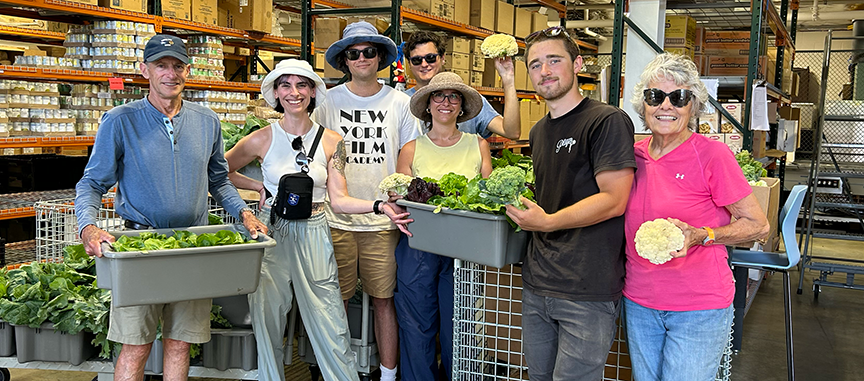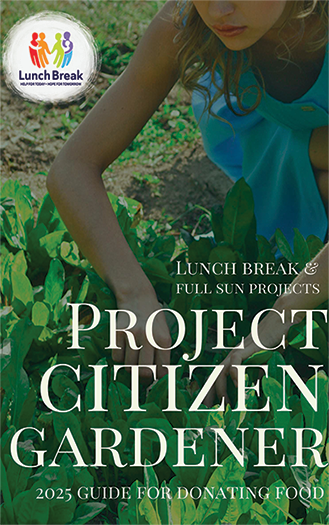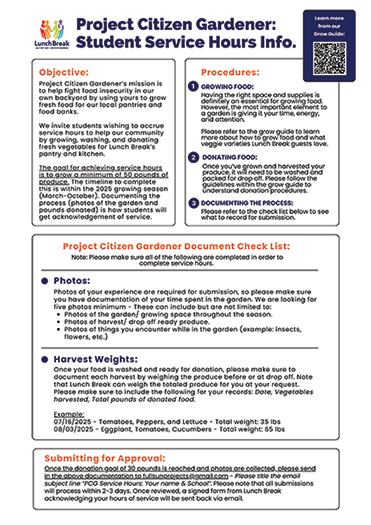Project Citizen Gardener
Help us combat food insecurity in our own backyard, using yours!
Calling All Gardeners!
In partnership with Full Sun Projects, we are calling out to our neighbors and friends within Monmouth County and beyond to donate fresh vegetables to Lunch Break’s Your Choice Pantry. This initiative is brought on by the rise in food costs and the high demand that Lunch Break has seen in the last year.
Gardeners
Whether you are involved in a community garden or have a small backyard space for growing, you can help make a difference to many families in Monmouth County and beyond.
Farmers
If you’re a farmer with any excess or blemished produce that’s still edible, you could help feed those in need.
Students
Students are invited and encouraged to participate if they need to accrue student service hours. We’ve created a PCG service hours form to encourage students to give back by growing food for those who need it most.

Food We Need
This information is based on a survey of clients at Lunch Break’s Your Choice Pantry and Community Kitchen. Please note that this is a list of preferences and that any and all donated produce is welcome! Here are some of the favorites!
All produce must be washed and dropped off at Lunch Break. If you have produce in bulk or transportation issues, please reach out. Donated food qualifies as a charitable donation for tax purposes.
Contact Us For More Information:
Gardeners and Farmers, contact: featherstonebonz@gmail.com
Students, contact: fullsunprojects@gmail.com
We Operate In:
Our primary service areas are Monmouth & Ocean Counties, with some programs crossing county lines. Individuals from other regions are never turned away for basics such as pantry staples, hot meals, and clothing.





